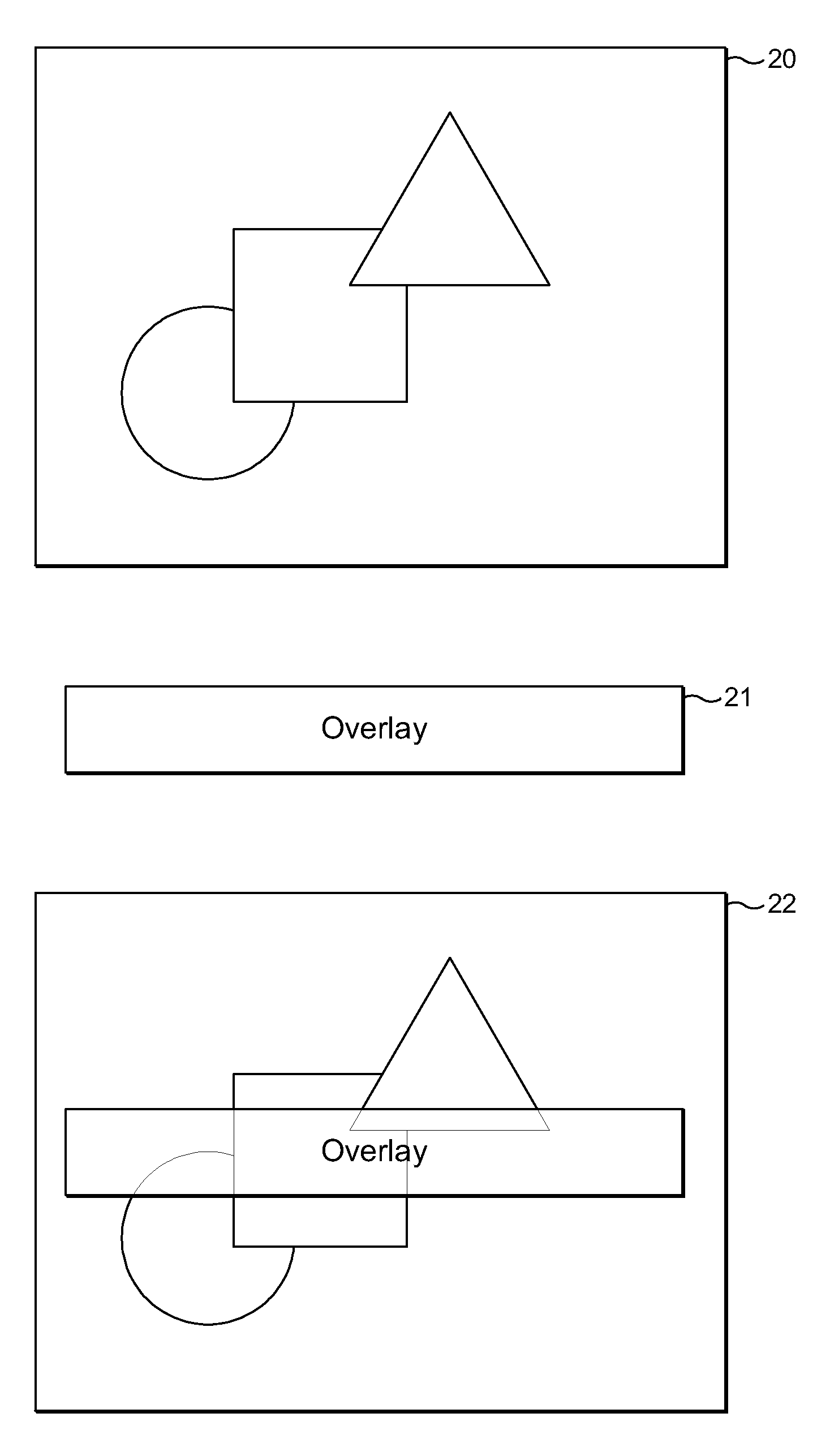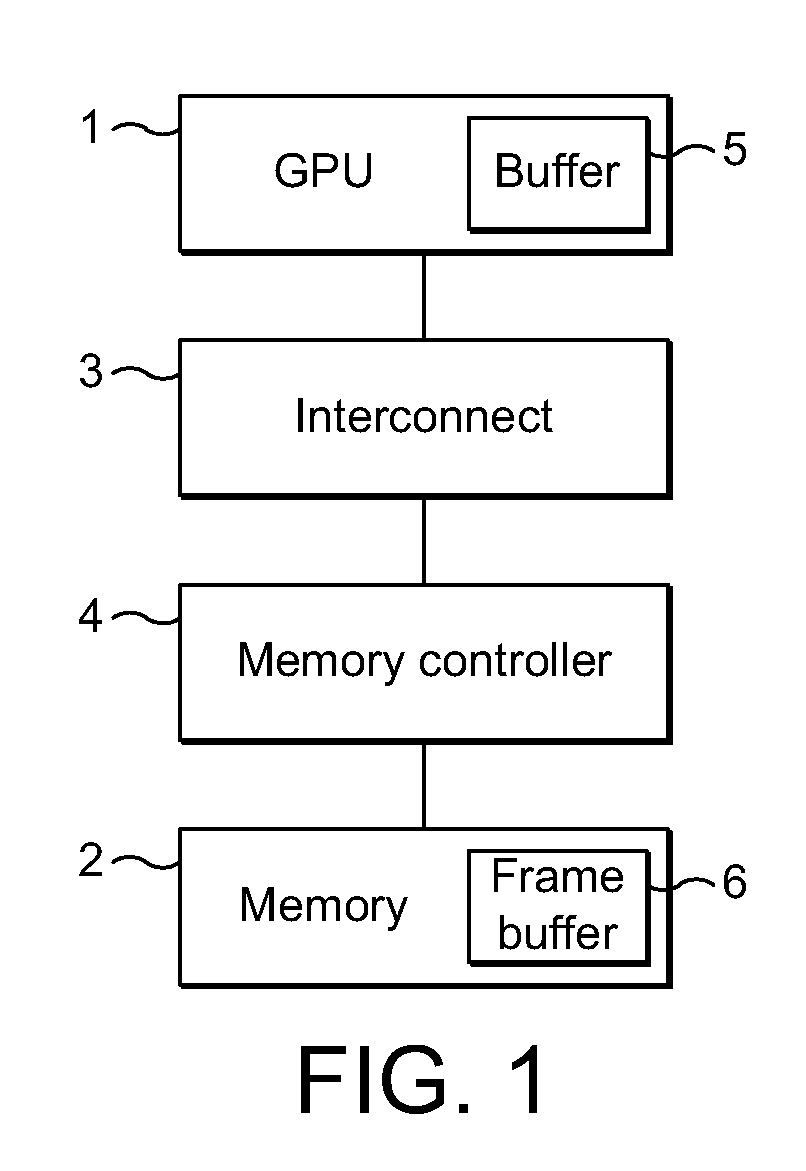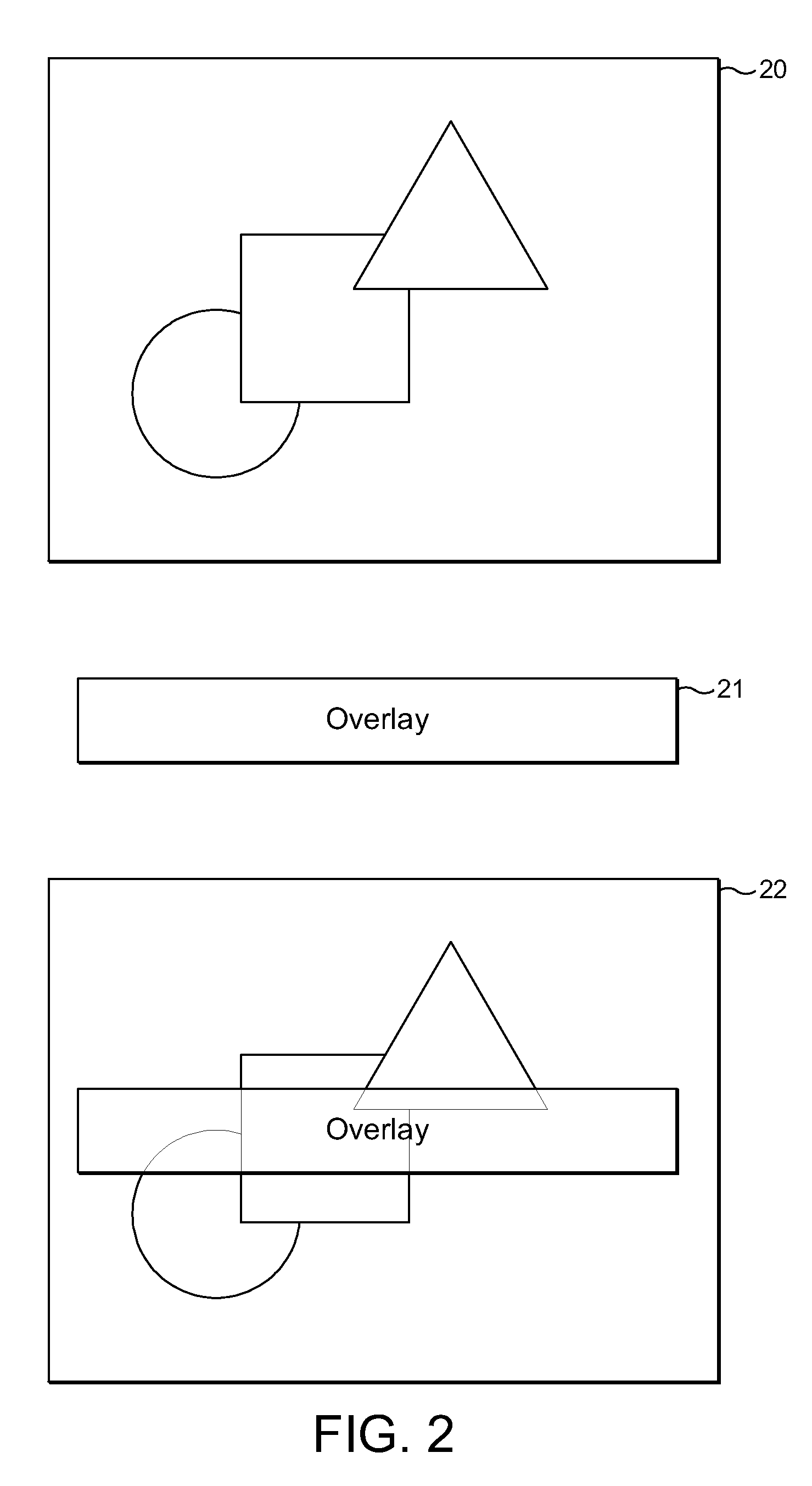Graphics processing systems
a graphics processing and graphics data technology, applied in the field of graphics processing systems, can solve the problems of consuming a relatively large amount of memory bandwidth, consuming power and memory bandwidth, and writing graphics data to and reading graphics data from the frame buffer (or other output buffer),
- Summary
- Abstract
- Description
- Claims
- Application Information
AI Technical Summary
Problems solved by technology
Method used
Image
Examples
Embodiment Construction
[0016]A first embodiment of the technology described herein comprises a method of operating a graphics processing system when an overlay image is to be overlaid on an existing image for which data is already stored in an output array of data in an output buffer, the method comprising:
[0017]using data for the overlay image to modify data for the existing image to show the overlay image overlaid on the existing image;
[0018]determining whether there are any regions of the existing image that have not been modified when modifying the data for the existing image to show the overlaid image; and
[0019]for any regions of the existing image that have been determined to have not been modified when modifying the data for the existing image to show the overlaid image, not writing data for those unmodified regions of the image to the output array of data in the output buffer, and leaving the existing data for those regions of the existing image unchanged in the output data array in the output buf...
PUM
 Login to View More
Login to View More Abstract
Description
Claims
Application Information
 Login to View More
Login to View More - R&D
- Intellectual Property
- Life Sciences
- Materials
- Tech Scout
- Unparalleled Data Quality
- Higher Quality Content
- 60% Fewer Hallucinations
Browse by: Latest US Patents, China's latest patents, Technical Efficacy Thesaurus, Application Domain, Technology Topic, Popular Technical Reports.
© 2025 PatSnap. All rights reserved.Legal|Privacy policy|Modern Slavery Act Transparency Statement|Sitemap|About US| Contact US: help@patsnap.com



